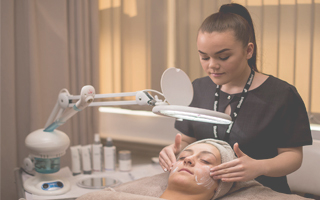Ispaa Management courses are designed to give participants the deeper knowledge to build the business from the grassroots level. It includes project planning and execution, investment and finance, recruitment and training, day today managerial tasks etc. Another area of focus is how to increase revenue by connecting key areas; Sales & Marketing and Finance. Students will come away being able to manage their department and resources better through an enhanced understanding of current Sales and Marketing techniques that are specifically suited to the Spa environment and also through an appreciation of finance and budgeting. These skills will enable the participants to engage more fully in the business and bring additional revenue to the bottom line.This course is vital for businesses looking to gain an edge in the increasingly competitive wellness Industry. Course Highlights: Unique spa concept to makes your Spa different. The connection between Finance and Sales & Marketing in order to create plans that get results. Read, analyze and understand a P&L statement for effective budgeting and accurate forecasting. Financial language to be able to effectively communicate with the Finance Director. The connection between understanding the Spa business and leading effective teams. Each Participant would be capable of managing the spa division with full confidence. Hundreds of tools to improve the on going projects in quality and profitability standards.
Reflexology is a holistic therapy method originated and practiced for several centuries in China. Reflexology practice and training widely spread to Europe and America during the mid of 18th century, several researches are done on the qi or energy theory which is the base on Chinese traditional medicine. European and American scientists also find relevance in Chinese theory of energy body. Reflexology believes in energy lines which carries qi or life force through out the body and controls the functioning and balancing of metabolic activities. The blockages on the flow of qi will result mall functioning of body system and in long run it may lead to diseases. They also believe there are more pressure points on feet and palms and it is the nerve endings that receives sensations to transport to the brain. Accurate pressure application on these nerve endings will result balancing of energy flow so that the body functions get normal. Reflexologists believe that applying pressure to these parts offers a range of health benefits. Reflexology aims to keep qi flowing through the body, keeping it balanced and disease free. In Chinese medicine, different body parts correspond with different pressure points on the body. Reflexologists use maps of these points in the feet, hands, and ears to determine where they should apply pressure. They believe their touch sends energy, flowing through body until it reaches the area in need of healing In the 1880s, European scientists found that nerves are connected to the organs and the body’s entire nervous system tends to adjust to outside factors, including touch. During Treatments a reflexologist’s touch may help to calm the central nervous system, promoting relaxation just like any form of massage. Others believe that the brain creates pain as a subjective experience and some times it reacts to physical changes. But in other cases, it may create pain in response to emotional or mental distress as well. Some believe that reflexology can reduce pain through calming touch, which may help to improve someone’s mood and reduce stress. Zone Therapy, The old name for Reflexology, is having the belief that the body contains 10 vertical zones and each zone contains different body parts and corresponds to specific fingers and toes. Practitioners of the zone theory believe that touching these fingers and toes allows them to access every body part in a particular zone. How ever Reflexology Treatment brings about deep relaxation to body and mind, so that its having a very important part to play in wellness sector.


